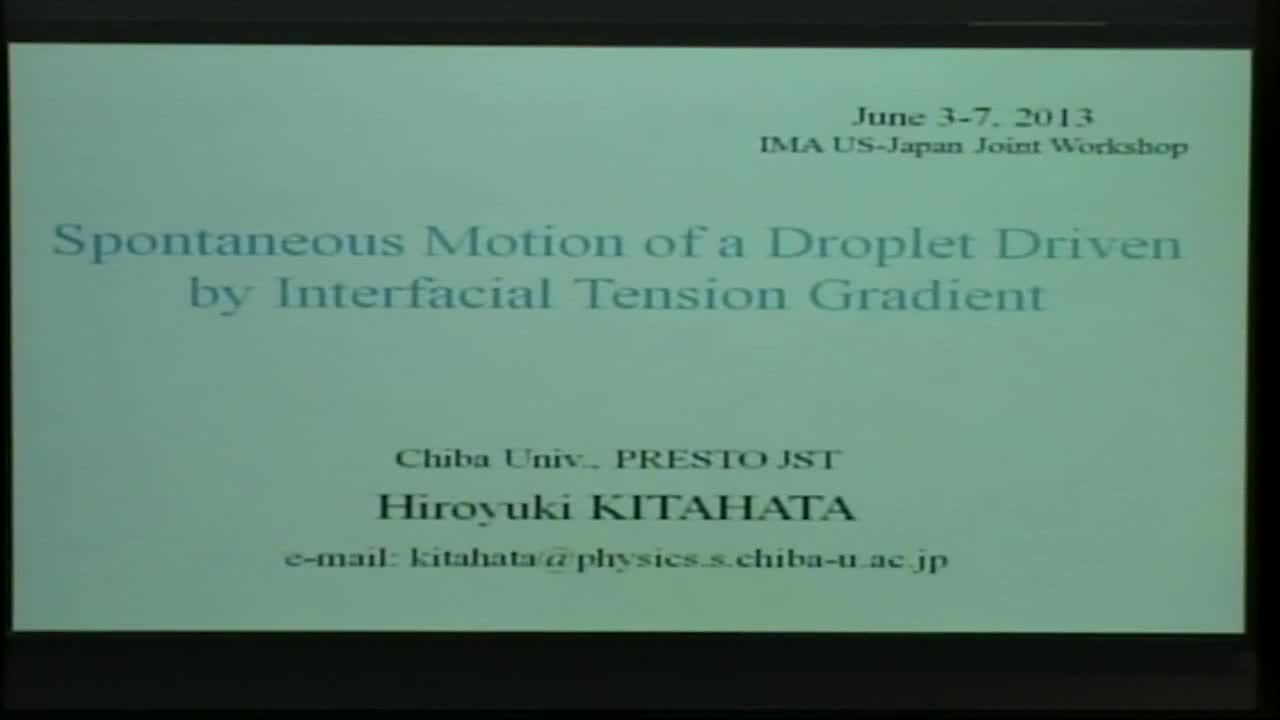Spontaneous Motion of a Droplet Driven by Interfacial Tension Gradient
Presenter
June 6, 2013
Keywords:
- Dissipative
MSC:
- 47B44
Abstract
A self-propelled systems have attracted broader interest. I will
introduce following two systems in which a droplet exhibits spontaneous motion induced by interfacial tension gradient. We consider mathematical model based on Stokes equation, and compare the theoretical results with experimental ones.
(i) We proposed a theoretical framework for the spontaneous motion of a droplet coupled with pattern formation inside it in a three-dimensional system. The nonlinearity of the chemical process inside the droplet induces inhomogeneous concentration profile, which leads to interfacial tension gradient at the droplet interface. The droplet is driven by the gradient through the surrounding flow due to the Marangoni effect. We also demonstrated experiments in which Belousov-Zhabotinsky (BZ) reaction droplet is moving coupled with chemical waves inside it.
(ii) We analyze spontaneous rotation of a droplet induced by the Marangoni flow in a two-dimensional system. The droplet with the small particle which supplies a surfactant at the interface is considered. We calculated flow field around the droplet using the Stokes equation and found that advective nonlinearity breaks symmetry for rotation. Theoretical calculation indicates that the droplet spontaneously rotates when the radius of the droplet is an appropriate size.
Reference:
H. Kitahata, N. Yoshinaga, K. H. Nagai, and Y. Sumino, Phys. Rev. E, 84,
015101 (2011).
H. Kitahata, N. Yoshinaga, K. H. Nagai, and Y. Sumino, Chem. Lett., 41,
1052 (2012).
K. H. Nagai, F. Takabatake, Y. Sumino, H. Kitahata, M. Ichikawa, and N. Yoshinaga, Phys. Rev. E, 87, 013009 (2013).
